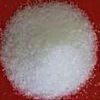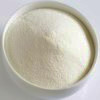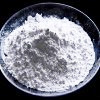| Anmol Chemicals is the pioneer manufacturers of Magnesium sulfate Magnesium sulphate Pharmaceutical Excipients Chemicals in India. We offer Halal and Kosher Magnesium sulfate Magnesium sulphate made in an ISO9001, ISO22000 (FSSC22000) and cGMP certified facility. Our group has several manufacturing facilities spread across the world, supported by toll manufacturers and representatives in UAE, Europe, Africa, USA, China and has several associated manufacturing facilities spread across India. All the Information on Physics, Chemistry, Applications, Uses and Technology on Manufacture of Magnesium sulfate Magnesium sulphate is in these pages. |
| The units have one or more of the certifications like FDA GMP, ISO 9001, ISO 22000, HACCP, REACH, Kosher & Halal |
Magnesium sulfate or Magnesium sulphate Anhydrous Monohydrate Dried Heptahydrate SDS of Manufactures Exporters
Heptahydrate MgSO4-7H2O CAS No.: 10034-99-8, EC Code EINECS: 231-298-2, Molecular Weight: 246.48, Chemical Formula: MgSO4-7H2O
Dried MgSO4-3.5H2O CAS No.: 15244-36-7, EC Code EINECS: 231-298-2, Molecular Weight: Varies as hydration is around 3.5H2O, Chemical Formula: MgSO4-3.5H2O
Monohydrate MgSO4-H2O CAS No.: 14567-64-7, EC Code EINECS: 231-298-2, Molecular Weight: 138.36, Chemical Formula: MgSO4-H2O
Anhydrous MgSO4 CAS No.: 7487-88-9, EC Code EINECS: 231-298-2, Molecular Weight: 120.37, Chemical Formula: MgSO4
Magnesium Sulfate Anhydrous & Dried SDS Safety Data Sheet
MSDS, Material Safety Data Sheet
1. Product Identification
Product Name & Other Names: Magnesium sulfate or Magnesium sulphate Anhydrous Monohydrate Dried Heptahydrate. Epsom salt.
CAS No.: anhydrous 7487-88-9, monohydrate 14567-64-7 or 14168-73-1, dried 15244-36-7, heptahydrate 10034-99-8
EINECS: 231-298-2
Molecular Weight: Varies with hydration. 120.37 for anhydrous.
Chemical Formula: MgSO4.xH2O. (x is up to 7)
Relevant uses and uses advised against (if any): Industrial Manufacturing.
2. Hazards Identification
GHS, Globally Harmonized System Classification in accordance with 29 CFR 1910
Classification according to Regulation (EC) No 1272/2008
Not a hazardous substance or mixture according to Regulation (EC) No. 1272/2008.
This substance is not classified as dangerous according to Directive 67/548/EEC.
Labeling according to GHS & Regulation (EC) No 1272/2008
GHS Label Elements NONE |
Signal Word: None
Hazards not otherwise classified (HNOC):
May causes mild skin irritation.
May Causes mild eye irritation.
Precautionary statements:
P261: Avoid breathing dust/fume/gas/mist/vapors/spray.
P262: Do not get in eyes, on skin, or on clothing.
P281: Use personal protective equipment as required.
P302+P352 - IF ON SKIN: Wash with plenty of soap and water.
P304 + P340 - IF INHALED: Remove victim to fresh air and keep at rest in a position comfortable for breathing.
P305 + P351 + P338 - IF IN EYES: Rinse cautiously with water for several minutes. Remove contact lenses, if present and easy to do. Continue rinsing.
P337+313: If eye irritation persists get medical advice/attention.
3. Composition/Information on Ingredients
Product Name & Other Names: Magnesium sulfate or Magnesium sulphate Anhydrous Monohydrate Dried Heptahydrate. Epsom salt.
CAS No.: anhydrous 7487-88-9, monohydrate 14567-64-7 or 14168-73-1, dried 15244-36-7, heptahydrate 10034-99-8
EINECS: 231-298-2
4. First Aid Measures
Always seek medical attention after first aid measures are provided.
Inhalation: Remove to fresh air. Get medical attention for any breathing difficulty.
Ingestion: Give several glasses of water to drink to dilute. If large amounts were swallowed, get medical advice.
Skin Contact: Remove any contaminated clothing. Wash skin with soap and water for at least 15 minutes. Get medical attention if irritation develops or persists.
Eye Contact: Wash thoroughly with running water. Get medical advice if irritation develops.
Note to Physician: IV administration of calcium gluconate will partially reverse the effects of acute magnesium toxicity. Ventricular support with calcium chloride infusion and mannitol forced diuresis has also been successful.
5. Fire Fighting Measures
Fire: Not flammable.
Explosion: It is not considered to be an explosion hazard.
Fire Extinguishing Media: Use any means suitable for extinguishing surrounding fire.
Products of Combustion: Sulphuric acid, Sulphur Dioxide and Magnesium Oxide may be formed.
Fire Extinguishing Media: Use means suitable for extinguishing surrounding fire.
Special Information: In the event of a fire, wear full protective clothing and NIOSH-approved self-contained breathing apparatus with full face piece operated in the pressure demand or other positive pressure mode. At high temperatures under fire conditions, it may produce toxic or irritating fumes. Fire-extinguishing work is done from the windward and the suitable fire-extinguishing method according to the surrounding situation is used. Uninvolved persons should evacuate to a safe place.
6. Accidental Release Measures
Personal precautions, protective equipment, and emergency procedures: Avoid breathing dust/fumes/gas/mist/vapors/spray. Use individual protective equipment (waterproof boots, suitable protective clothing, safety glasses, etc.). Restrict unprotected personnel from the area. Prevent any contact with hot surfaces. Do not approach facing the wind. Do not touch the spilled material.
Environmental precautions: Do not let the product enter drains, soil, or water sources.
Methods and materials used for containment Cleanup procedures and Storage:
Small Spill: Use appropriate tools to put the spilled solid in a convenient waste disposal container. Finish cleaning by spreading water on the contaminated surface and dispose of according to local and regional authority requirements.
Large Spill: Contain spilled material. Do not let the product enter drains. Use a shovel to put the material into a convenient waste disposal container. Finish cleaning by spreading water on the contaminated surface and allow evacuating through the sanitary system if local laws permit.
7. Handling and Storage
Precautions for safe handling: Apply according to good manufacturing and industrial hygiene practices. Ensure proper ventilation. In case of insufficient ventilation, wear suitable respiratory equipment. Wash thoroughly after handling. Do not drink, eat, or smoke while handling. Avoid contact with skin, eyes, and clothing. Minimize dust generation. Avoid breathing dust/fumes/gas/mist/vapors/spray. Avoid contact with eyes, skin, and clothing. Keep container tightly closed. Avoid ingestion and inhalation. Use individual protective equipment (waterproof boots, suitable protective clothing, safety glasses, etc.). Prevent any contact with hot surfaces.
Conditions for safe storage, including any incompatibilities: Store in cool, dry, and ventilated area away from heat sources and protected from sunlight in tightly closed original container. Keep air contact to a minimum. Store protected from heat, sparks and ignition sources and incompatible materials. Avoid contact with skin and eyes. Avoid inhalation of dust/mist/vapor. Do not store with incompatible materials like strong oxidizing agents, ethoxy ethyl alcohols, arsenates, phosphates, tartrates, lead, barium, strontium, and calcium.
8. Exposure Controls/Personal Protection
Airborne Exposure Limits: None established.
Ventilation System: A system of local and/or general exhaust is recommended to keep employee exposures as low as possible. Local exhaust ventilation is generally preferred because it can control the emissions of the contaminant at its source, preventing dispersion of it into the general work area.
Personal Respirators (NIOSH Approved): For conditions of use where exposure to dust or mist is apparent and engineering controls are not feasible, a particulate respirator may be worn. For emergencies or instances where the exposure levels are not known, use a full-face positive-pressure, air-supplied respirator.
Skin Protection: Wear protective gloves and clean body-covering clothing.
Eye Protection: Use chemical safety goggles. Maintain eye wash fountain and quick-drench facilities in work area.
Other Control Measures: Maintain good housekeeping in work area. Dust deposits on floors and other surfaces may pick up moisture and cause the surfaces to become slippery and present safety hazards. Handle in accordance with good industrial hygiene and safety practice. Wash hands after handling.
9. Physical and Chemical Properties
Appearance: Magnesium Sulfate is white powder, crystals granules.
Odor: It is odorless.
Odor threshold: Not available.
pH: Aqueous solution is neutral or slightly acid.
Relative density: Not available.
Melting Point: 1124C (2055F) Decomposes.
Initial boiling point and boiling range: Not available.
Flash point: Not available.
Auto-ignition temperature: Not available.
Decomposition temperature: Not available.
Upper/lower flammability or explosive limits: Not available.
Vapor pressure: Not available.
Vapor density: Not available.
Evaporation rate: Not available.
Flammability (solid, gas): Not available.
Partition coefficient: n-octanol/water: Not available.
Solubility: Very soluble in water.
Viscosity: Not available.
10. Stability and Reactivity
Stability: Stable under ordinary conditions of use and storage. Absorbs moisture on exposure.
Hazardous Decomposition Products: Oxides of sulfur and the contained metal.
Hazardous Polymerization: Will not occur.
Incompatibilities: Ethoxy ethyl alcohols, arsenates, phosphates, tartrates, lead, barium, strontium, and calcium.
Conditions to Avoid: Heat, moisture, incompatibles.
11. Toxicological Information
Toxicity to Animals:
LD50 Subcutaneous - mouse - 645 mg/kg for anhydrous material.
LD50 Subcutaneous - rat - 1.200 mg/kg for anhydrous material.
Carcinogenic Effects: Not a reported carcinogen by IARC NTP ACGIH OSHA.
Mutagenic Effects: Laboratory experiments have resulted in mutagenic effects.
Teratogenic Effects: No.
12. Ecological Information
Environmental Toxicity:
24 hour EC50 Daphnia magna (water flea) : 1700 mg/L.
24 hour LC50 Lepomis machrochirus (bluegill) : > 5000 mg/L [static].
72 hour EC50 Scenedesmus subspicatus (green algae) : 2700 mg/L.
This material is not expected to be toxic to aquatic life.
Results of PBT and vPvB assessment: This substance/mixture contains no components considered to be either persistent, bioaccumulative and toxic (PBT), or very persistent and very bioaccumulative (vPvB) at levels of 0.1% or higher.
13. Disposal Considerations
Whatever cannot be saved for recovery or recycling should be managed in an appropriate and approved waste disposal facility. Processing use or contamination of this product may change the waste management options. State and local disposal regulations may differ from federal disposal regulations. Dispose of container and unused contents in accordance with federal, state, and local requirements.
14. Transport Information
DOT USA, TDG Canada & ADR/RID Europe: Not Regulated.
IMDG/IMO: Not Regulated.
IATA/ICAO: Not Regulated.
15. Regulatory Information
USA:
California No Significant Risk Level: None of the chemicals in this product are listed.
DISCLAIMER: The information and recommendations set forth herein (hereinafter "Information") are presented in good faith and believed correct as of the date hereof. It is compiled from various sources and it is not necessarily all inclusive nor fully adequate in every circumstance. In addition, these suggestions should not be confused with nor followed in violation of applicable laws, regulations, rules or insurance requirements applicable.This Magnesium sulfate Magnesium sulphate SDS sheet is intended only as a guide to the appropriate precautionary handling of the material by a properly trained person using this product. Individuals receiving the information must exercise their independent judgment in determining its appropriateness for a particular purpose.
We also manufacture and supply Ammonium Bicarbonate and Ammonium Carbonate.
Magnesium sulfate Magnesium sulphate Anhydrous Monohydrate Dried Heptahydrate USP BP Ph Eur Reagent FCC Food Grade Manufacturers:
Anmol Chemicals
S-8, SARIFA MANSION, 2ND FLANK ROAD, CHINCHBUNDER, MUMBAI 400009, INDIA
TEL: (OFFICE) 91-22-23770100, 23726950, 23774610, 23723564. FAX: 91-22-23728264
e-mail: anmolc@mtnl.net.in

Exports to USA, Canada, UAE, Dubai, South Africa, Tanzania, Kenya, Nigeria, Egypt, Uganda, Turkey, Mexico, Brazil, Chile, Argentina, Dubai, Europe Netherlands, Italy, Spain, Germany, Portugal, France, Malaysia, Indonesia, Thailand, Korea, Vietnam, Japan, etc.
Copyright and Usual Disclaimer is Applicable. 30 December, 2021






